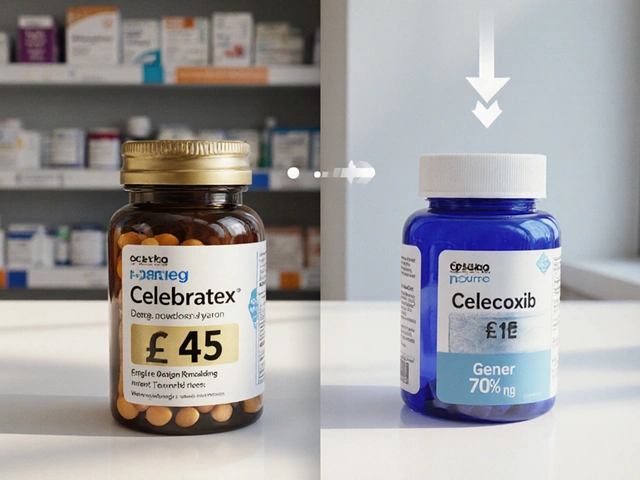
Health November 14, 2025
Diabetes and Weight Loss: Proven Strategies to Manage Blood Sugar and Lose Weight Safely
When you have type 2 diabetes, losing weight isn’t just about fitting into smaller clothes-it’s one of the most powerful tools you have to take back control of your health. Many people assume diabetes means you’re stuck with high blood sugar and daily meds, but the truth is simpler: losing just 5-7% of your body weight can dramatically lower your A1C, reduce or even eliminate the need for medication, and bring you closer to remission. This isn’t a miracle cure. It’s science-and it works for thousands of people every day.
Why Weight Loss Matters So Much for Diabetes
Excess fat, especially around the abdomen, doesn’t just sit there. It actively interferes with how your body uses insulin. Fat cells release chemicals that cause inflammation and make your muscles and liver resistant to insulin. That means your pancreas has to work harder to produce more insulin just to keep blood sugar in check. Over time, this burns out the insulin-producing cells. That’s how prediabetes turns into type 2 diabetes.
But here’s the good news: when you lose weight, that fat starts to shrink. Liver and pancreas fat drops. Insulin sensitivity improves. Blood sugar goes down. In the landmark DiRECT trial, nearly half of participants who lost 10 kg (about 22 lbs) achieved diabetes remission within a year. Remission doesn’t mean a cure-it means blood sugar levels return to normal without medication. And it’s possible for many people, especially if they lose weight early.
What Weight Loss Target Should You Aim For?
You don’t need to lose 50 pounds to see results. The American Diabetes Association recommends starting with a goal of 5-7% of your current body weight. For someone who weighs 200 pounds, that’s 10-14 pounds. That’s it. That small change can lower your A1C by 0.5-1.0%, reduce blood pressure, and improve cholesterol levels.
Studies show that losing 10% of your weight (like 20 pounds if you’re 200) significantly increases your chance of remission. Losing 15% or more (30 pounds) puts you in the range where many people no longer need diabetes meds at all. The key isn’t speed-it’s consistency. Losing 1-2 pounds per week is sustainable. Faster loss often leads to muscle loss, nutrient gaps, and rebound weight gain.
How to Lose Weight With Diabetes: The Proven Approach
There’s no magic diet for diabetes. But there are proven patterns. The most effective strategies combine three things: calorie control, movement, and behavior change.
1. Eat Fewer Calories-But Don’t Starve
Creating a 500-750 calorie deficit per day leads to steady, safe weight loss. That’s not about eating salads all day. It’s about making smarter swaps:
- Swap sugary soda for sparkling water with lemon
- Use a 9-inch plate instead of a 12-inch one to naturally reduce portions
- Replace white rice with cauliflower rice or quinoa
- Choose whole fruit over fruit juice
Focus on high-fiber carbs-like beans, lentils, oats, and non-starchy vegetables. Fiber slows digestion, keeps blood sugar steady, and keeps you full longer. The ADA recommends at least 14 grams of fiber per 1,000 calories. That’s about 35 grams a day for most people.
2. Move More-And Build Muscle
Aerobic activity like brisk walking, cycling, or swimming for 150 minutes a week (30 minutes, 5 days) helps burn calories. But strength training is just as important. Muscle burns more calories at rest than fat. Two days a week of resistance training-bodyweight squats, dumbbell rows, resistance bands-can boost your metabolism and improve insulin sensitivity more than cardio alone.
One user on Reddit shared: “I hit a plateau after losing 18 pounds. I added two 20-minute strength sessions a week. Within a month, I lost another 10 pounds-without changing my diet.”
3. Change Your Habits, Not Just Your Meals
Most people lose weight and gain it back because they treat dieting like a short-term fix. The Diabetes Prevention Program (DPP) showed that people who got weekly coaching for 6 months, then monthly check-ins after that, kept off the weight long-term. Key habits include:
- Tracking food with an app like MyFitnessPal (even just a few days a week)
- Planning meals ahead to avoid impulsive eating
- Identifying emotional triggers-stress, boredom, sadness-and finding non-food responses
- Getting 7-8 hours of sleep. Poor sleep raises cortisol, which increases belly fat and cravings
Medications That Help-And Those That Hurt
Your meds can either help or hurt your weight loss efforts. If you’re on insulin or sulfonylureas (like glipizide), you’re more likely to gain weight or get low blood sugar when cutting calories. Talk to your doctor about switching to weight-neutral or weight-loss-friendly options:
- GLP-1 agonists (semaglutide/Wegovy, tirzepatide/Mounjaro): These reduce appetite and slow digestion. People lose 15-20% of body weight on average. Side effects like nausea often fade after a few weeks.
- SGLT2 inhibitors (empagliflozin, dapagliflozin): These make your kidneys flush out extra sugar through urine. They help with weight loss (5-10 lbs on average) and protect your heart and kidneys.
- Metformin: May cause mild weight loss (5-10 lbs) and is still a first-line choice for many.
- Avoid: Insulin (unless absolutely necessary), sulfonylureas, thiazolidinediones (pioglitazone)-these often cause weight gain.
One user wrote: “I was on insulin and gained 25 pounds in a year. Switched to semaglutide and lost 30 pounds in 8 months. My A1C went from 8.1% to 5.7%.”
What About Bariatric Surgery?
For people with severe obesity (BMI over 35) and type 2 diabetes, surgery can be life-changing. Gastric bypass and sleeve gastrectomy lead to 20-30% weight loss on average. In 60-80% of cases, diabetes goes into remission within months-not years. It’s not for everyone. It’s expensive, requires lifelong vitamin supplements, and carries surgical risks. But for those who qualify and are ready for the commitment, it’s one of the most effective treatments available.
Real People, Real Results
Take Sarah, 58, who lost 22 pounds in 6 months using the DPP program. She walked 30 minutes after dinner every day, measured her portions, and swapped out fried foods for grilled chicken and roasted veggies. Her A1C dropped from 7.2% to 5.9%. She no longer needs metformin.
Or Marcus, 47, who struggled with emotional eating. He joined a virtual coaching group and learned to recognize his triggers. He started cooking at home, ate dinner at the same time every night, and stopped keeping snacks in the house. He lost 18 pounds and cut his insulin dose in half.
These aren’t outliers. They’re examples of what happens when people use evidence-based tools consistently.

Common Mistakes and How to Avoid Them
Many people fail not because they lack willpower, but because they make predictable mistakes:
- Skipping meals to cut calories → Leads to blood sugar crashes and overeating later. Eat regular meals with protein and fiber.
- Over-relying on low-carb diets → Some people do great, but others feel fatigued or develop nutrient gaps. Focus on quality carbs, not just cutting them.
- Not adjusting meds → Losing weight while on insulin or sulfonylureas can cause dangerous lows. Always work with your provider to adjust doses before or during weight loss.
- Ignoring sleep and stress → Chronic stress raises blood sugar. Poor sleep increases hunger hormones. Fix these before blaming your diet.
- Waiting for the scale to move → If you’re building muscle, the scale won’t budge-but your clothes will fit better, your energy will rise, and your A1C will drop. Track non-scale victories too.
Tools and Support That Actually Work
You don’t have to do this alone. The CDC’s National Diabetes Prevention Program offers a 16-week core course (plus ongoing support) led by certified coaches. It’s free or low-cost if you have Medicare or certain private insurance. Many programs now offer virtual sessions via Zoom or apps.
Apps like MyFitnessPal, Noom, and Lose It! help with tracking. Continuous glucose monitors (CGMs) like Dexcom or Freestyle Libre can show you how your meals affect your blood sugar in real time-making it easier to choose foods that keep you steady.
And don’t underestimate social support. Joining a group, even online, doubles your chances of success. People who share their progress with others are more likely to stick with it.
What’s Next? The Future of Diabetes Weight Loss
The field is evolving fast. In 2024, the ADA and European Association for the Study of Diabetes officially declared weight loss a primary goal of diabetes care-not just a bonus. New drugs like tirzepatide are pushing the boundaries of what’s possible. Digital tools are making coaching more accessible than ever.
But the core hasn’t changed: sustainable weight loss still comes down to eating less, moving more, and building habits that last. The science is clear. The tools are here. And the results? They’re life-changing.
Can you reverse type 2 diabetes by losing weight?
Yes, for many people. Losing 10-15 kg (22-33 lbs) can lead to diabetes remission, especially if you’ve had the condition for less than 6 years. Remission means blood sugar returns to normal without medication. The DiRECT trial showed 46% of participants achieved remission after losing 10 kg. It’s not guaranteed, but it’s possible-and more likely the sooner you act.
How much weight do I need to lose to see better blood sugar control?
As little as 5-7% of your body weight. For someone weighing 200 pounds, that’s 10-14 pounds. This small loss can lower your A1C by 0.5-1.0%, reduce insulin resistance, and often cut medication needs. The benefits start quickly-even before you hit your full goal.
Is it safe to lose weight if I’m on insulin?
Yes, but you must work with your doctor first. Losing weight while on insulin or sulfonylureas increases your risk of low blood sugar. Your provider should adjust your doses before or as you start losing weight. Never reduce your insulin on your own. Many people successfully lose weight on insulin with proper planning and monitoring.
What’s the best diet for weight loss with diabetes?
There’s no single “best” diet. The most effective approach is one you can stick to. Focus on whole foods: vegetables, lean proteins, legumes, whole grains, nuts, and healthy fats. Limit added sugars, refined carbs, and ultra-processed foods. High-fiber, moderate-protein meals keep you full and stabilize blood sugar. Mediterranean, DASH, and low-glycemic diets all work well.
Why am I not losing weight even though I’m eating less?
Several things could be happening. You might be underestimating calories, especially from oils, sauces, or snacks. Medications like insulin or steroids can make weight loss harder. Lack of sleep, high stress, or not enough protein can stall progress. Try tracking food for a week with an app, add strength training twice a week, and talk to your doctor about your meds. Plateaus are normal-adjusting your routine often breaks them.
If you’ve been told your diabetes is permanent, remember: it’s not. Weight loss doesn’t have to be extreme. It just has to be consistent. Start small. Focus on one habit at a time. And know that every pound you lose is a step toward better health, more energy, and greater freedom from meds.
Write a comment
Items marked with * are required.






8 Comments
Jennifer Walton November 15, 2025 AT 18:14
It’s not about willpower. It’s about biology. Your body doesn’t care if you ‘want’ to lose weight-it cares about insulin resistance, and that’s not fixed by willpower alone.
Just saying.
Kihya Beitz November 16, 2025 AT 19:33
Oh wow, another ‘lose 5% and cure diabetes’ fairy tale. Where’s the study on people who did all this and still ended up on insulin five years later? Oh right-those don’t get published.
Also, semaglutide costs $1k/month. Thanks for the ‘proven strategy’ for people who can afford it.
John Foster November 17, 2025 AT 22:46
There’s an underlying assumption here that weight loss is the only path to metabolic health, which ignores the fat acceptance movement, the role of chronic stress, and the fact that insulin resistance can persist even at normal BMIs.
What we’re really discussing is not weight loss per se, but systemic metabolic dysfunction-and reducing fat mass is just one of many possible interventions, not a universal solution.
And yet, the narrative persists: thin = healthy, fat = broken. That’s not science. That’s cultural bias dressed up as medical advice.
People with type 2 diabetes are told they’re failing when their bodies don’t respond to diet and exercise, when the real failure lies in a system that offers no support beyond ‘eat less, move more’ while ignoring sleep, trauma, environmental toxins, and pharmaceutical incentives.
It’s not that the advice is wrong-it’s that it’s incomplete, and worse, it’s weaponized against people who are already vulnerable.
Remission isn’t a moral victory. It’s a statistical outlier for a subset of the population. For the rest, managing symptoms with dignity matters more than chasing a number on a scale.
And yes, I’ve seen people lose 40 pounds, go into remission, then regain it all because life happened and no one told them how to sustain it emotionally.
So while I appreciate the data, I’m tired of the moral framing. Health isn’t a reward for discipline. It’s a right.
Edward Ward November 18, 2025 AT 07:45
I really appreciate how thorough this is-but I think we’re missing a huge piece: gut microbiome diversity.
Recent studies (2023, Cell Host & Microbe) show that people who achieve diabetes remission after weight loss have significantly different gut flora than those who don’t-even when weight loss is identical.
That means two people losing 15 pounds might have wildly different outcomes based on what’s living in their intestines.
Probiotics? Maybe. Fermented foods? Definitely. Prebiotic fiber? Absolutely.
And here’s the kicker: the DiRECT trial didn’t even measure microbiome changes. So we’re optimizing for weight, not biology.
Also, sleep quality and circadian rhythm alignment are massive, under-discussed factors. If you’re eating at midnight and sleeping at 3 a.m., no amount of cauliflower rice will fix that.
And CGMs? Brilliant tool-but they’re useless if you don’t understand what the trends mean. A glucose spike after avocado? That’s fat slowing absorption. A spike after oatmeal? That’s a refined carb in disguise.
We need to move from ‘lose weight’ to ‘optimize metabolic environment.’ Weight is just a symptom.
Also, I’d love to see a follow-up on how people maintain remission after 5 years. The data is thin there.
And yes, I’ve been prediabetic for 7 years. I lost 18 pounds with DPP, added strength training, and now I’m off metformin. But I also took a probiotic daily and slept 7.5 hours every night. No one told me that mattered until I read a paper on it.
So yes, this is good. But it’s not the whole story.
Andrew Eppich November 19, 2025 AT 03:28
This article is dangerously misleading. You imply that weight loss is a cure, but you never mention that many people who achieve remission still have underlying beta-cell dysfunction. You present it as a personal achievement when in reality, it is a temporary metabolic reset. The medical community has been complicit in promoting this myth for decades. People are shamed into believing they are responsible for their disease. That is unethical. Diabetes is a complex, multifactorial condition. To reduce it to a matter of calories in versus calories out is not only inaccurate-it is cruel.
Furthermore, the promotion of GLP-1 agonists as a ‘solution’ ignores the fact that these drugs are designed for profit, not for health. They are expensive, have significant side effects, and are not accessible to the majority of the world’s population. This is not medicine. This is consumerism.
And you praise bariatric surgery as ‘life-changing’ without acknowledging the high rates of depression, nutritional deficiencies, and lifelong medical dependency that follow. This is not empowerment. This is medical colonization of the body.
True health is not measured by A1C or BMI. It is measured by dignity, autonomy, and access to care. This article fails on all counts.
Jessica Chambers November 19, 2025 AT 16:16
Just wanted to say I lost 12 lbs on the DPP program and my A1C dropped from 6.8 to 5.6. No meds changed. Just walked after dinner and stopped drinking soda. 😌
Also, I use Noom and it’s weirdly helpful. Not perfect, but better than nothing.
Also, my cat sleeps on my lap when I’m stressed. That’s my new coping mechanism. 🐱
Shyamal Spadoni November 20, 2025 AT 03:17
They dont tell you the truth about this because the pharma companies own the ADA and the CDC and the hospitals and the doctors too
They want you to think you can fix it with diet but really they just want you to buy more drugs and more CGMs and more apps
Did you know that the same people who wrote this article also get paid by Novo Nordisk?
And the DiRECT trial? It was funded by a pharmaceutical group that makes GLP-1 drugs
They dont want you to know that weight loss is temporary and that the real solution is to stop eating processed food and live like humans did 100 years ago
But they need you to keep buying their pills so they can buy their yachts
Also I think the moon landing was fake
And the sun is not a star its a hologram
And diabetes is caused by 5G radiation and glyphosate
But if you lose weight you are still a slave to the system
Just saying
Ogonna Igbo November 21, 2025 AT 16:35
Why do Americans always think losing weight is the answer to everything
Here in Nigeria we eat real food-yam, plantain, okra soup, grilled fish
We don’t need your low carb nonsense or your expensive CGMs
Our grandparents had no diabetes because they worked in the field and ate what the earth gave them
You sit in your air-conditioned office and think you can fix your body with apps and protein shakes
But we know the truth-you are sick because you are lazy and disconnected from your roots
And now you want to pay $1000 for a drug that makes you throw up
Go back to your treadmill and stop pretending this is science
Real health is in the soil, not in your smartphone
And if you want to fix diabetes-stop eating imported sugar and corn syrup
That’s the real problem
Not your weight
Your soul is sick